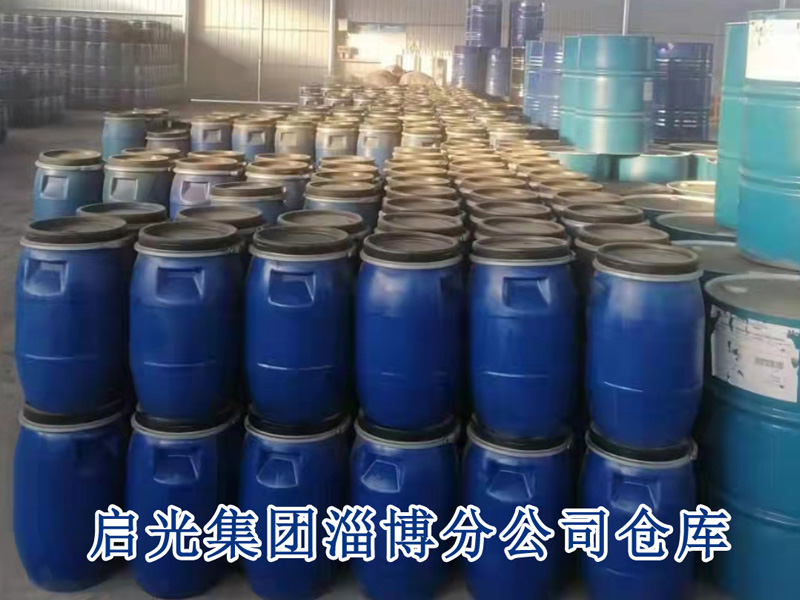1. Definition
1. Hydroxyl value: The amount of hydroxyl (-OH) contained in 1 gram of polymer polyol is equivalent to the number of milligrams of KOH in mgKOH/g.
2. Equivalent: Equivalent=56100/hydroxyl value
3. Isocyanate content:
4. Isocyanate index: Indicates the degree of excess isocyanate in the polyurethane formula, usually represented by the letter R.
5. Chain extender: refers to low molecular weight alcohols and amine compounds that can extend and expand the molecular chain or form spatial network cross-linking.
6. Hard segment: The segment on the main chain of the polyurethane molecule formed by the reaction of isocyanate, chain extender, and cross-linking agent. These groups have larger cohesion energy, larger space volume, and greater rigidity.
7. Soft segment: Carbon-carbon main chain polymer polyol has good flexibility and is a flexible segment in the polyurethane main chain.
8. Foaming index: The proportion of water equivalent to 100 parts of polyether is defined as the foaming index (IF).
9. One-step method: refers to a method in which oligomer polyol, diisocyanate, chain extender and catalyst are mixed at the same time, directly injected into the mold, and solidified at a certain temperature.
10. Prepolymer method: First, the oligomer polyol and diisocyanate are prepolymerized to generate an NCO-terminated polyurethane prepolymer. During casting, the prepolymer is reacted with a chain extender to prepare a polyurethane elastomer. method, called the prepolymer method.
11. Semi-prepolymer method: The difference between the semi-prepolymer method and the prepolymer method is that part of the polyester polyol or polyether polyol, chain extender, catalyst, etc. are added to the prepolymer in the form of a mixture.
12. Reaction injection molding: Also known as RIM (Reaction Injection Molding), oligomers with small molecular weight are measured in liquid form, mixed instantly and injected into the mold at the same time, and react quickly in the mold cavity, and the material A process in which the molecular weight increases rapidly and a new polymer containing a new characteristic group structure is generated at an extremely fast speed.
13. Foaming index: The proportion of water equivalent to 100 parts of polyether is defined as the foaming index (IF).
14. Foaming reaction: Generally refers to the reaction in which water reacts with isocyanate to form substituted urea and releases CO2.
15. Gel reaction: generally refers to the formation reaction of carbamate.
16. Gel time: The time required for a liquid substance to form a gel under certain conditions.
17. Milky white time: When zone I is about to end, milky white phenomenon will appear in the liquid polyurethane mixture material. This time is called cream time in polyurethane foam production.
18. Chain extension coefficient: refers to the ratio of the amount of amino and hydroxyl groups (unit: mo1) in the chain extender component (including mixed chain extender) to the amount of NCO in the prepolymer, that is, the active hydrogen group and NCO Ratio of moles (number of equivalents).
19. Low unsaturation polyether: mainly developed for PTMG. The price of PPG and the degree of unsaturation are reduced to 0.05mol/kg, which is close to the performance of PTMG. It uses DMC catalyst and the main variety is Bayer’s Acclaim series products.
20. Urethane grade solvent:
21. Physical foaming agent: Physical foaming agent means that foam pores are formed through changes in the physical form of a certain substance, that is, through the expansion of compressed gas, the volatilization of liquids, or the dissolution of solids
22. Chemical foaming agents: Chemical foaming agents are compounds that can release gases such as carbon dioxide and nitrogen after being decomposed by heating, and form pores in the polymer composition
23. Physical cross-linking: There are some hard chains in the polymer soft chains. The hard chains have the same physical properties as chemically cross-linked vulcanized rubber at temperatures below the softening point or melting point.
24. Chemical cross-linking: refers to the process in which macromolecular chains are connected through chemical bonds under the action of light, heat, high-energy radiation, mechanical force, ultrasonic waves and cross-linking agents to form network or body-shaped polymers.

2. Short answer
1. What are the structural types of commonly used isocyanates?
Answer: Divided into aliphatic, alicyclic and aromatic
2. What are the commonly used isocyanates? Write the structural formula
Answer: Toluene diisocyanate (TDI), diphenylmethane-4,4′-diisocyanate (MDI), polyphenylmethane polyisocyanate (PAPI), liquefied MDI, hexamethylene diisocyanate (HDI), hydrogenated TDI ,
3. What do TDI-100 and TDI-80 mean?
Answer: TDI-100 refers to a mixture composed entirely of 2,4 structure toluene diisocyanate; TDI-80 refers to a mixture composed of 80% 2,4 structure toluene diisocyanate and 20% 2,6 structure.
4. What are the characteristics of TDI and MDI in the synthesis of polyurethane materials?
Answer: Regarding the reactivity of 2,4-TDI and 2,6-TDI. The reactivity of 2,4-TDI is several times higher than that of 2,6-TDI. This is because the 4-position NCO in 2,4-TDI is far away from the 2-position NCO and ADisease. The equipment is equipped with multiple switching modes, which can be used for spraying or pouring.
60. Give the Chinese name: PPG: polyoxypropylene; PTMG: tetrahydrofuran homopolyether; TDI: toluene diisocyanate; MDI: diphenylmethane-4,4′-diisocyanate; PAPI: polymethylene polyphenyl Polyisocyanate; HDI: hexamethylene diisocyanate; MOCA: polyurethane vulcanizing agent; HQEE: hydroquinone dihydroxyethyl ether; DETDA: diethyl toluenediamine; DMTDA: dimethylthiotoluenediamine; T -9: polyurethane catalyst stannous octoate; T-12: organotin catalyst; RIM: reaction injection molding; LFI: long glass fiber injection molding; IF: foaming index; PIR: polyisocyanurate; ISF: whole Leather molded foam; CPU: cast polyurethane elastomer; TPU: thermoplastic polyurethane elastomer; MPU: compounding polyurethane elastomer; EG: ethylene glycol; DEG: diethylene glycol; 1,4-BDO: 1,4-dihydroxybutane; TMP: trimethylolpropane; TGA POP